
Director Roland Emmerich’s decision to accurately reveal London as it was at Shakespeare’s time in his film ‘Anonymous’ became an opportunity to use new visual effects techniques to rebuild the city from the ground up in vivid detail. VFX supervisors Marc Weigert and Volker Engel talk about the approaches and challenges.
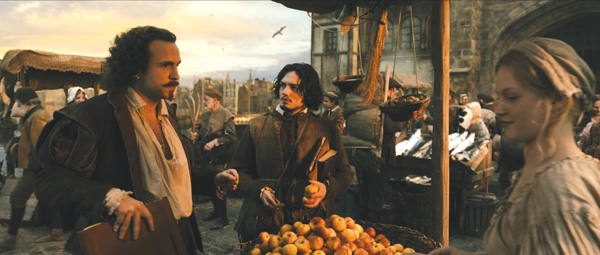 |
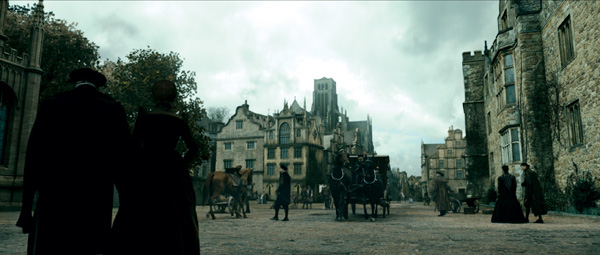 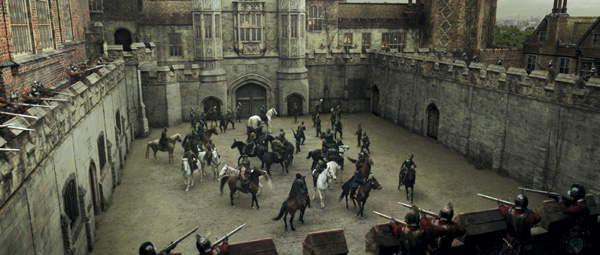 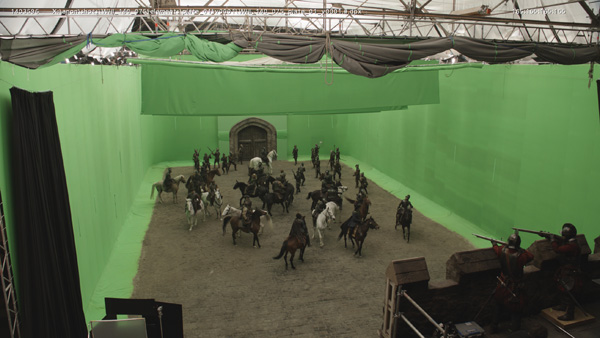 |
| Marc Weigert and Volker Engel from Uncharted Territory, acting both as executive producers and visual effects supervisors, were among the first people involved with director Roland Emmerich’s film ‘Anonymous’. In November 2009, even before the Art Department was assembled, they began talking with Roland, who knew from the outset that the way he wanted to make this film could only be achieved with visual effects.
Reconstruction Research About two-thirds of the exterior of the Rose Theatre and the street leading up to it were the only sets made for exteriors, and the interiors were built as practical sets. Thus, virtually any action in the film taking place outdoors or in the internal courtyards was shot on green screen and required Uncharted Territory’s CG backgrounds and environments. By the end of the project, the Uncharted Territory team’s shot count rose to over 300. Their approach was very precise, recreating the city street by street based on a contemporary plan of the city and building every detail in CG. Marc and Volker made three, one week-long research trips into Wales, the North of England, Scotland and returning south to London, and shot close to 50,000 photographs of any buildings they found in villages that retained original features of this era. They also accompanied the location manager and scout to help determine which churches and other locations would suit the script. To capture buildings and textures in the villages, photogrammetric techniques were used, shooting objects from multiple angles to be able to accurately re-build them in 3D. They were also shot at three different exposures to avoid any baked-in light. Fortunately, typical English weather prevailed during the trips with diffused, murky light. Otherwise Marc would shoot just before dawn or after sunset to capture neutral lighting. The resulting imagery could later be mapped onto 3D geometry. Lego Set They created several different versions of, for example, first floor sections of half-timbered houses – a version with one door and three windows, another with two doors and one window, and so on. The same approach was applied to second floors. They also developed a collection of roof designs. Like a Lego set, these components could be put together in different configurations as whole buildings which could then be accurately positioned according to a detailed map they had of London in about 1605. The roads, city blocks, churches and other city features were recreated in the same way until the whole city was rebuilt. Perfectly Imperfect Second, staying true to their historic map of London meant placing the buildings manually into position. “R&D time and funds were limited. Development for much automation would have blown out the schedule closer to 18 months or more and cost more. So in most cases, we often had to limit ourselves to what we knew we could do within the available time,” Marc said. Nevertheless, a notable exception was the development relationship between Uncharted Territory and eyeon Software. Focused on compositing using eyeon Fusion, the collaboration has continued since they worked together on ‘2012’. By paying eyeon an amount over the cost of the required Fusion licenses, their developers have been custom programming tools for the artists to help them overcome specific challenges. In turn, eyeon could then put the tools and research toward improvements to their own software. Development for Speed Atmospherics such as haze smoke, fog and mist were important both for authenticity and to give the backgrounds and wide views a feeling of depth. For example, a super wide shot of the Earl of Oxford arriving to collect his son from the Tower of London, shows his carriage standing in front of the Tower in very foggy surroundings. This was captured in a fairly clear, studio green screen set-up, with many layers of diffusion added in the composite. “The most important factor for us in such developments was speed. Creating and rendering water in a 3D package is time consuming, and hardly interactive. We needed to be fast, since we had a short schedule, a fairly small team and very little money. By doing most of the water straight in comp, we saved a lot of render time and gained interactivity.” Simple to use tools made for Fusion also helped place chimney smoke into hundreds of different smoke stacks and chimneys. A few other technical directors and programmers were also hired to write custom tools making the workload possible within the short timeframe. Light and Detail The film’s low budget demanded a tightly run, fast shoot. “Without much time or money,” Marc said, “we did less previs on this movie than on all of our other movies. But for the first time, we went straight from previs to the final shots – in other words, the previs was basically the first version of a shot. We mostly previs’d the establishing shots. The Art Department would create simple previs models in XSI, which we then took over into 3ds Max to create the camera moves.” Because many of the green screen shots were captured under neutral lighting, they worked with the director of photography Anna Foerster to create the light correctly in the completed shots. Anna had selected contemporary paintings, especially by Dutch painters like Vermeer, to illustrate the lighting and mood she was after. Marc and Volker also worked out how the set should be lit so that Uncharted Territory could create backgrounds to achieve the desired effect. For example, in a backlit scenario with a low sun, buildings would have to be placed to avoid casting massive shadows across the action. It can be difficult to predict on a green screen set what interaction a CG background will have with the on-set lighting. Prototype Shoot “I always get very involved in camera testing, since that is the basis for everything we do except for full CG shots. Apart from the noise level, the camera also affects colour correction, which can make or break a VFX shot. It’s also a question of workflow. The more we can automate in our pipeline, the faster we can get the full resolution turnovers once the scenes have been edited. Shooting 35mm, for instance, interrupts an automated workflow because of the ‘manual’ process of film scanning,” Marc said. |
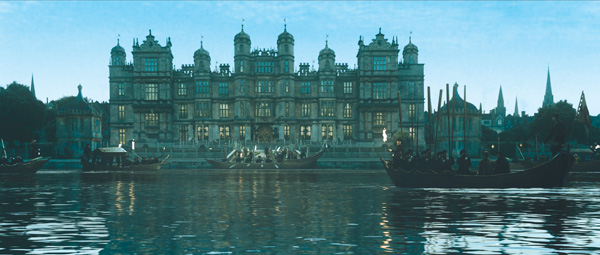 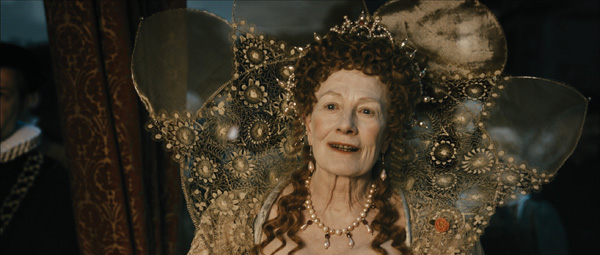 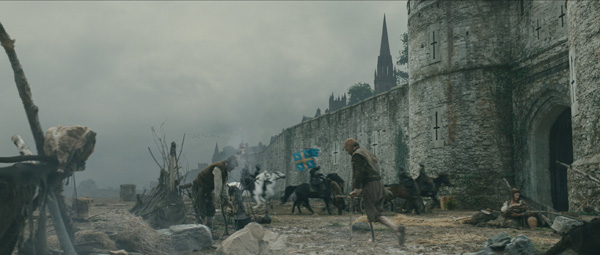 |
| Green Screen Rebels The Essex Rebellion ‘shoot out’ near the end of the film in particular was a demanding sequence completely staged on green screen without a single real wall. It takes place in a large internal courtyard area in which only an entrance archway with two doors for the actors to pass through was real. Marc said, “We did not previs this sequence. It simply wouldn’t have mattered. We knew that we had to create the entire environment in 3D, and since the environment was static - not like the earthquake environment in ‘2012’ - which needed lot of previs for timing, it didn’t matter where you put your camera. We knew that pretty much every shot needed a CG background, so we built the courtyard in full detail in 3D as a virtual set. Then we ‘just’ had to match move the camera for very shot once it was edited.” This sequence had very neutral overcast lighting to avoid a specific direction for the sunlight, like many of their green screen set-ups. This way, the camera could remain fairly static, placing the actors as required for the drama and the lighting could be refined later for continuity. However, as Volker explained, “This results in what is probably the trickiest kind of lighting you could ask a CG team to work with for an environment. With so little directional light, it’s very easy for CG to just look like CG. Clear shadows and more contrast help create a more realistic looks.” They needed to key through the smoke of the guns to add the backgrounds, and sometimes ran out of green screen in low-angle shots. They also built interior rooms for this sequence, to provide detail though the windows behind the firing musket soldiers. |
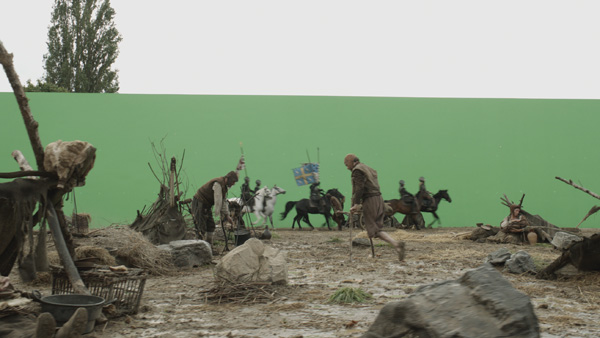 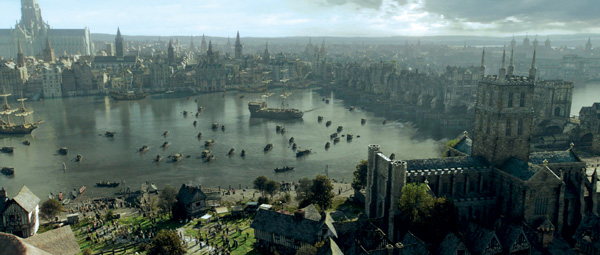 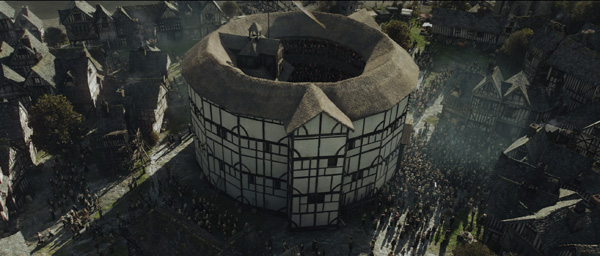 |
| Persistent Pixels Some of the scripting developed with eyeon is made available to Fusion users, some is published and demonstrated during the company’s roadshows and some has already been coded into the current release of Fusion. Deep compositing is an example arising from work such as the placement of chimney smoke into the wide shots of London. “Its advantage is in allowing you to choose any pixel in 3D space and link an element to it. Regardless of what the camera does subsequently, you remain linked to that pixel, something that cannot be done with a regular z-depth map. Thus, pixels could be chosen on a series of chimneys to assign particle emitters to, for the smoke, which will be locked to that background in a world coordinate pass, even though the background is only an image rendered from a 3D renderer," Marc explained. “A dedicated channel is created at render time, for example, when using V-Ray as your renderer for Maya or 3ds Max. The channel gives a specific ID for each pixel and its location in 3D space. It keeps this ID linked to a precise part of the object you have selected. This is similar to what a z-depth channel does. However, while the z-depth can do this on a still frame, it won’t be able to keep track of the pixel’s new location in the next frame. Deep compositing can overcome this limitation by identifying that selected part of the chimney, even though it is only in a rendered 2D image, not a full 3D object. Even when the camera moves around or a mask is applied, the channel remains locked to that pixel.” |
| Images: Courtesy of Uncharted Territory and Sony Pictures Words: Adriene Hurst |


















